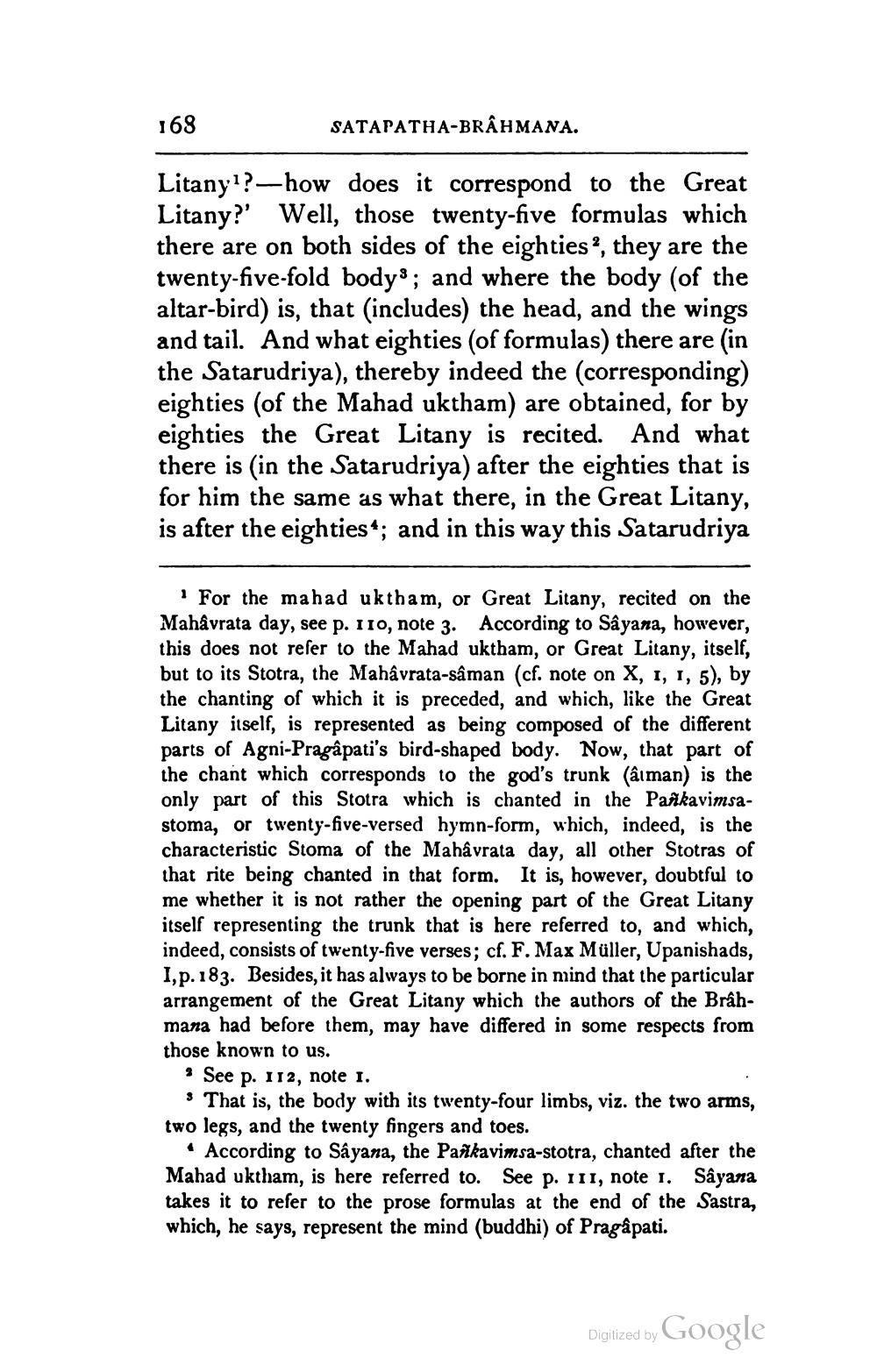________________
168
SATAPATHA-BRAHMANA.
Litanyl?-how does it correspond to the Great Litany?' Well, those twenty-five formulas which there are on both sides of the eighties?, they are the twenty-five-fold body> ; and where the body (of the altar-bird) is, that includes) the head, and the wings and tail. And what eighties (of formulas) there are (in the Satarudriya), thereby indeed the (corresponding) eighties (of the Mahad uktham) are obtained, for by eighties the Great Litany is recited. And what there is (in the Satarudriya) after the eighties that is for him the same as what there, in the Great Litany, is after the eighties*; and in this way this Satarudriya
For the mahad uktham, or Great Litany, recited on the Mahâvrata day, see p. 110, note 3. According to Sâyana, however, this does not refer to the Mahad uktham, or Great Litany, itself, but to its Stotra, the Mahâvrata-sâman (cf. note on X, 1, 1, 5), by the chanting of which it is preceded, and which, like the Great Litany itself, is represented as being composed of the different parts of Agni-Pragâpati's bird-shaped body. Now, that part of the chant which corresponds to the god's trunk (âiman) is the only part of this Stotra which is chanted in the Pankavimsastoma, or twenty-five-versed hymn-form, which, indeed, is the characteristic Stoma of the Mahâvrata day, all other Stotras of that rite being chanted in that form. It is, however, doubtful to me whether it is not rather the opening part of the Great Litany itself representing the trunk that is here referred to, and which, indeed, consists of twenty-five verses; cf. F. Max Müller, Upanishads, I, p.183. Besides, it has always to be borne in mind that the particular arrangement of the Great Litany which the authors of the Brahmana had before them, may have differed in some respects from those known to us.
. See p. 112, note 1.
s That is, the body with its twenty-four limbs, viz. the two arms, two legs, and the twenty fingers and toes.
• According to Sayana, the Pankavimsa-stotra, chanted after the Mahad uktham, is here referred to. See p. 111, note 1. Sâyana takes it to refer to the prose formulas at the end of the Sastra, which, he says, represent the mind (buddhi) of Pragâpati.
Digitized by Google




